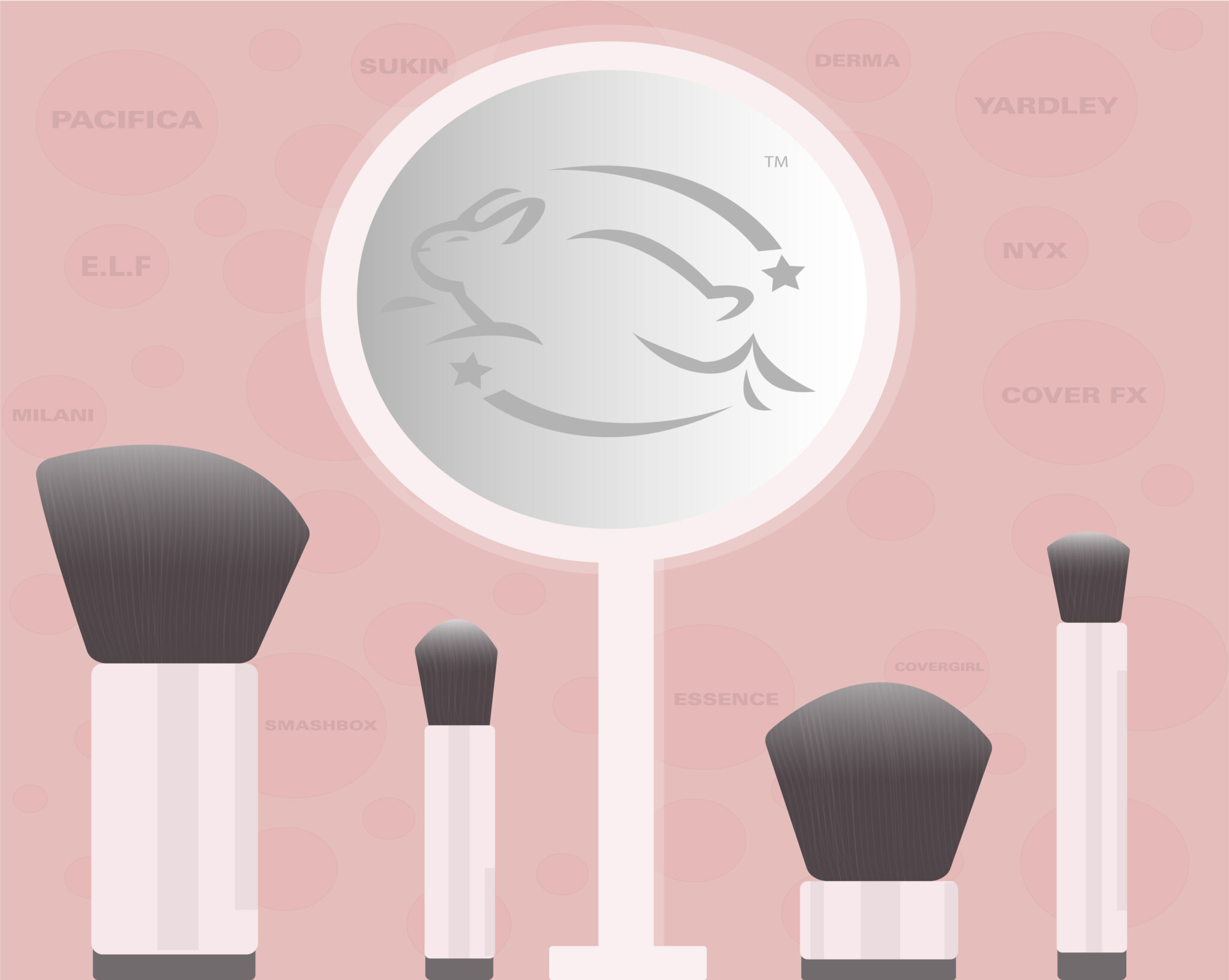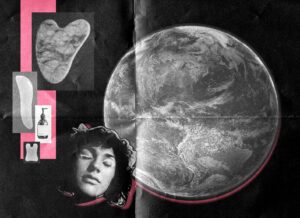GRAPHIC DESIGNER: Kamesha Abraham
COPY EDITOR: Erica Weekes
Of the 50 largest cosmetic companies ranked by market value as per Brand Finance in 2021, 88 per cent fund animal testing. L’Oréal, which is valued at USD $10.2 billion, tests its products on animals. Similarly, numerous high ranked companies such as Gillette, Nivea, Guerlain, Estee Lauder, Pantene and Clinique also test on animals.
While bigger companies delay making the shift to cruelty-free processing, many local beauty brands have made it their mission to produce sustainable and cruelty-free products from the beginning. And the market for ethical, more sustainable products is there, as consumers are starting to become more aware of how shopping affects the planet.
Wildcraft, a Toronto-based company founded in 2014, is 100 per cent natural and cruelty-free. Wildcraft is also environmentally conscious with its packaging, using only glass materials for products and eliminating plastic when shipping.
“We don’t use any exotic ingredients that tend to be over-harvested and then tend to decimate the environments and ecosystems that they’re in,” growth manager Meredith Rowat said.
Wildcraft offers a variety of skin products, from serums to toners to body care.
While testing products on animals for cosmetic purposes is unethical, companies do it to ensure human safety. A question that often arises with a cruelty-free brand is: how does a company know that its products are safe for human use?
Rowat said Wildcraft makes every single product in-house, which allows them to have full control over production.

They also only use natural ingredients, which are often gentler and less likely to cause skin irritation. Rowat said that as long as they use the proper proportions of ingredients, the risk of harm is low.
When it comes to testing the product, there are a few options. Rowat says she tests them herself along with the Wildcraft team. After formulating the product, the company will often send it out to a tester group of either customers or friends and family to get feedback.
Even natural ingredients can be too harsh for human skin. Rowat clarified that Wildcraft strays from “super active raw ingredients.” For example, they do not use a pure form of Vitamin C, as it could potentially burn the skin.

All of Wildcraft’s products are tested in a lab, not necessarily to ensure there is no danger to humans, but more so to confirm the shelf life and stability of the product.
Natural products often have a shorter shelf life compared to a product made with strong chemicals.
“If you’re comparing a natural product to a chemical based product, the shelf life is definitely going to be shorter. But natural products can still have a preservative system in them that is 100% natural.”
Rowat said a common natural preservative is called Leuconostoc, which is fermented and almost like “kimchi”. This ingredient helps stabilize and extend shelf life.
Wildcraft’s ingredients are fairly minimal and easy to understand. According to their website, the Restore Face Cream consists of eight ingredients. Orange flower water, Aloe vera juice, Beeswax, and Avocado oil are some of the ingredients listed in the product description.
While Wildcraft has a simpler approach to their ingredients, not all brands are like this. Though cruelty-free products are generally thought to be “all natural”, this is not necessarily always the case.
For example, Glossier, a popular cruelty-free makeup and skincare brand, has a longer and more complex list of ingredients for some of their products. Their Priming Moisturizer has a lengthy ingredient list including “Tridecyl Stearate,” “Palmitic Acid” and “Trisodium Ethylenediamine Disuccinate.” Rowat stresses that it’s important to note that ingredients with long names aren’t automatically full of chemicals and bad for the skin.
“It’s just like a chemically altered natural product that ends up having a long name because it has multiple bonds,” she said.
For example, the Palmitic Acid in Glossier’s face cream is a fatty acid that can be found in palm oil. And Tridecyl Stearate is a thickening agent and emollient which may be synthetic or animal-derived.
Rowat does warn of “green washing” in products, cruelty-free or not. She says the ingredient “parfum” is ambiguous, meaning companies can “sneak in” other substances without having to declare them.
“I’m always wary of products that have parfum in the ingredient list because it can house other chemicals without them legally having to disclose.”
According to a Virginutty article, parfum or fragrance is a chemically manufactured scent. However, it has no functional purpose and can often trigger mild forms of allergic reactions such as irritation, redness and burning.
Creating a cruelty-free, sustainable brand can often get pricey. For example, Dr. Barbara Sturm, a reputable, cruelty-free skincare brand, sells serums over $200. Rowat said one of Wildcraft’s main goals is to make cruelty-free products accessible for everyone.
“All of our products are under $35. So that you can use them in your everyday skincare routine, and that means that it’s affordable enough to use them every single day.”
She also noted how brand transparency is crucial; it’s important to ensure that the ingredients used are accessible for anyone to research.
“Having a brand that’s more approachable and non intimidating. All of these things contribute to accessibility right? So it’s just being a brand that customers can have total confidence in purchasing.”
There was once a time when cruelty-free and ethical beauty products were high end and inaccessible for the average person. However, as shoppers begin to be more conscious of the products they use and what a brand stands for, cruelty-free products are becoming more affordable and accessible.

























